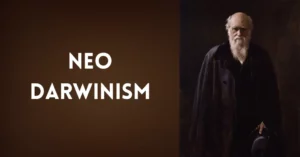AI Answer Evaluation Platform Live Now. Try Free Answer Evaluation Now
Theory of Use and Disuse
Meaning
The ‘theory of use and disuse’ refers to the concept that all organisms physically adjust to their environment in ways that these new physical characteristics could be inherited by their offspring. Therefore, it is also known as the theory of inheritance of acquired characteristics.[1]

French naturalist Jean-Baptiste Lamarck (1744-1829) is the author of this theory due to which it is also called Lamarckism. He used the theory as a part of orthogenetic evolution or evolution as a means of reaching biological complexity.
Laws of Heredity
Lamarck proposed the theory of use and disuse in his book Philosophie zoologique (1809) as a part of the first of two laws.
The first law suggested that an organ gains significant functionality and growth when subjected to continuous utility – use. Additionally, the lack of utilisation of an organ results in its deterioration and diminution – disuse.
Lamarck’s second law is based on soft inheritance where the use and disuse of organs produce significant physical characteristics which in turn are retained in the successive generations of the organism.[2]
In accordance with the laws he suggested the example that if a terrestrial animal began spending the majority of its life swimming in the ocean, the offspring of that animal could be born with better swimming abilities.
Theory of use and disuse is a ridiculed theory of evolutionary process that Lamarck propounded long before Darwinism or any other scientifically informed notion of genetics. Regardless, the theory possessed both error and brilliance in peculiar ways.
The Error
Theory of use and disuse basically entertained the idea that if a person has his arm amputated due to an accident, he or she could bear children with one arm less. Lamarck made the erroneous claim that such evolutionary processes can occur during one single lifetime and can cause mutations in subsequent offsprings.
Moreover, these laws upheld the notion that the structural aspects of organisms are perfectly synchronous with the adaptive demands of their environments. But this remains an ignorant belief that does not explain why the same species of animals have continued to exist in different types of ecological settings. [1]
The Breakthrough
Charles Darwin in his On the Origin of Species (1859) also points to effects of use and disuse on heredity which remains an interesting validation of Lamarckism.[3]
Lamarck’s brilliance was in highlighting environmental and ecological factors in forming the nature of an organism’s adaptive responses.
However, the difference between Lamarckism and Darwinism is that the former promoted direct adaptation to environmental cues while the latter suggested transmission of spontaneous variation in progeny.
In the example of giraffes, Lamarck strongly insisted that the elongated neck of giraffes was the outcome of straining to reach higher food supply on trees. This form of stretching altered their front legs and necks which were acquired by their offspring. However, Darwin’s view gave impetus to survival. He theorised that giraffes having longer necks had a decent chance of reaching higher leaves and in turn possessed better chances of survival.
It is therefore imperent, that Lamarck is equally credulous in putting forward evolution along with some form of environmental adaptation into popular science.
Contradictions and Neo-Lamarckism
August Weissman was the first to counter Lamarck’s theory of use and disuse. He did so by propounding a germ plasm theory that suggested an inheritance exempt from somatic cells or experience. Weissman demonstrated this by cutting off the tails of several mice and observing if their offsprings were born without tails.[4] However, this work remained unpopular due its dependency on intervention from external agents.[3]
On the other hand, neo-lamarckism gained popularity as a set of scholars keen on promoting Lamarck’s work, particularly in favor of germ cell variation and acquired characteristics. These domains include modern synthesis, transgenerational epigenetic inheritance and prokaryotic CRISPR. However, most of these Lamarckian offshoots remain refuted or invalidated.[5]
Outside Genetics
In the 1930s, theory of use and disuse also fell prey to a Soviet-era campaign called ‘Lysenkoism’ which used Lamarckism against scientific principles for agriculture [1] and biology. In this theory, the Darwinian model of ‘natural selection based on individual survival’ was deemed capitalist. Subsequently, bogus beliefs regarding agricultural production were spread all over the Soviet Union by botanist Thomas Lysenko. Inspired by Lamarckism, scientists began storing wheat grain at low temperatures to hope for a new generation that is tolerant to cold environments. Of course, this did not yield favorable results and once again proved the adaptive model of acquired characteristics in the ‘theory of use and disuse’ as inconsequential even in the socio-political sense.
References
[1] Antón, S. C., Stanford, C. B., & Allen, J. S. (2011). Biological Anthropology: The Natural History of Humankind. Pearson.
[2] Lamarck Jean-Baptiste (1914). Zoological Philosophy; An Exposition with Regard to the Natural History of Animals. Translated, with an introduction, by Hugh Elliot. Macmillan and Co
[3] Ghiselin, Michael T. (1994). “The Imaginary Lamarck: A Look at Bogus “History” in Schoolbooks”. The Textbook Letter (September–October 1994).
[4] Romanes, George John (1893). An examination of Weismannism. Open Court. OL 23380098M
[5] Gregory, T. Ryan (March 8, 2009). “Lamarck didn’t say it, Darwin did”. Genomicron (Blog). Archived from the original on 1 February 2015. Retrieved 2015-11-04




